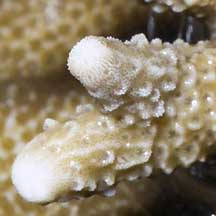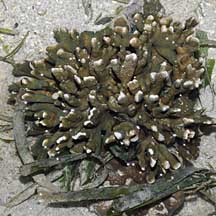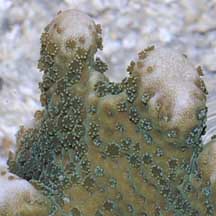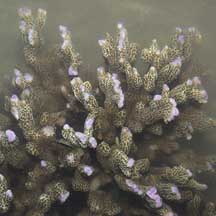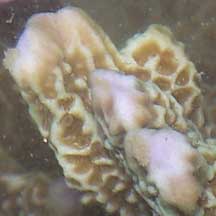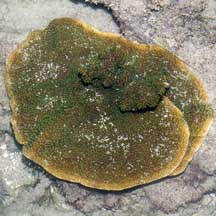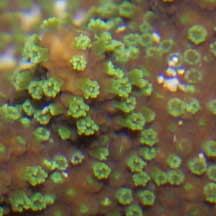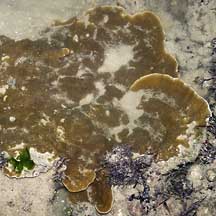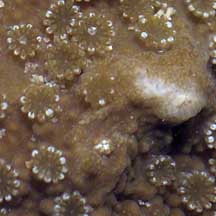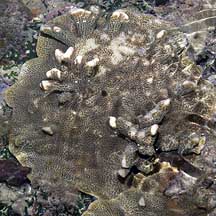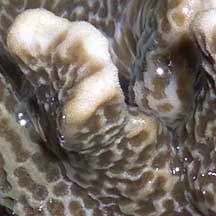 |
|
| hard corals text index | photo index |
| Phylum Cnidaria > Class Anthozoa > Subclass Zoantharia/Hexacorallia > Order Scleractinia > Family Acroporidae > Montipora sp. |
| Montipora
corals Montipora sp. Family Acroporidae updated Sep 2025 Where seen? These corals are often seen on many of our Southern shores. As a group, various Montipora species are found from deep water to clear reefs as well as lagoons with murky waters. Some species are relatively fast growing. Features: Colonies may be plate-like, branching, encrusting to somewhat spherical. Sometimes, the same species may have different growth forms, even one colony may have different shapes. In branching forms, the branch tips are usually white and smooth, lacking polyps. In plate-like forms, the edges usually paler, smooth and lacking polyps. Corallites and polyps are tiny (0.2-0.5cm or smaller). Polyps look like tiny sea anemones, with short body column and short tentacles. When expanded, the tiny polyps of some species give a fuzzy appearance. Thus, they are sometimes called velvet corals. But in other species, the polyps are so tiny that the colony appears smooth and stony. The polyps are usually only extended at night. There are probably several different species on these pages. It's hard to distinguish them without close examination of small features. On this website, they are grouped by large external features for convenience of display. Role in the habitat: Montipora corals are among the important building blocks of a reef. Together with Acropora coral (Acropora sp.), another member of the Family Acroporidae, montipora corals account for one-third of reef-building coral species. Those with branching forms provide shelter for all kinds of animals including seahorses, tiny clams and all kinds of crabs. Human uses: Montipora corals are taken from the wild for the live aquarium trade and wild colonies are often taken from the natural reefs to supply this demand. There are efforts to cultivate some of the hardier, faster-growing Montipora species for the live aquarium trade so as to reduce collection pressure from the wild. Although captive bred corals are healthier and easier to care for than wild collected specimens, captive bred corals are more expensive. Status: While a few species are listed as Vulnerable and Near Threatened, for most there is inadequate information as at 2024 to make an informed assesment of the conservation status of the recorded Acropora corals in Singapore. |
| Some Montipora corals on Singapore shores |
| Montipora
species recorded for Singapore from Checklist of Cnidaria (non-Sclerectinia) Species with their Category of Threat Status for Singapore by Yap Wei Liang Nicholas, Oh Ren Min, Iffah Iesa in G.W.H. Davidson, J.W.M. Gan, D. Huang, W.S. Hwang, S.K.Y. Lum, D.C.J. Yeo, May 2024. The Singapore Red Data Book: Threatened plants and animals of Singapore. 3rd edition. National Parks Board. 663 pp. in red are those listed as threatened in the above.
|
|
Links
References
|

